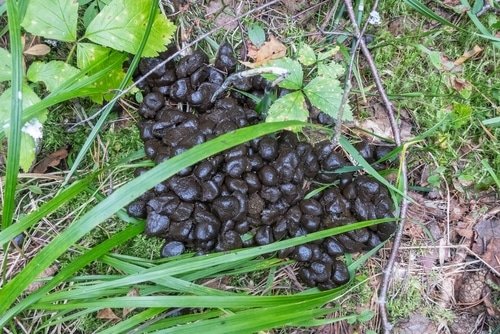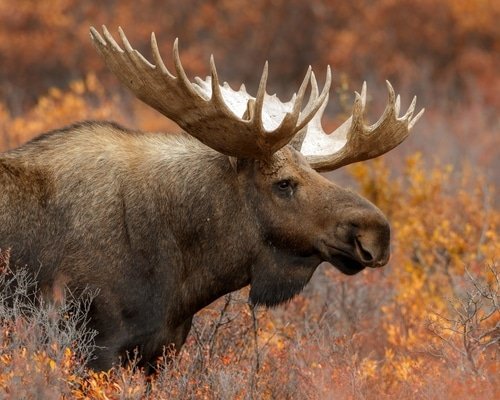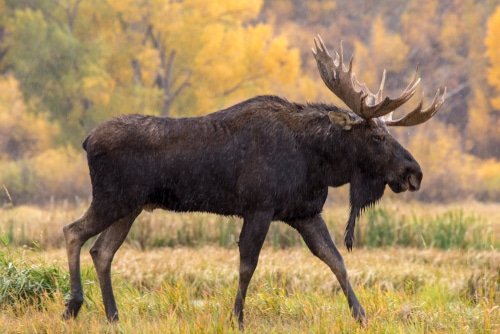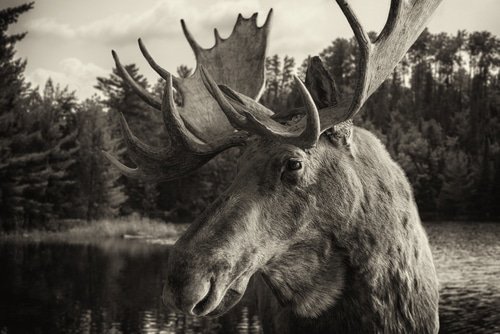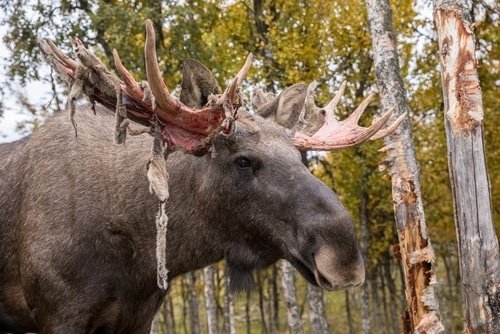Moose, those magnificent giants of the wilderness, have a certain allure that captivates nature enthusiasts and wildlife lovers. In this blog, we will discuss moose viewing tips to enhance your experience with these amazing animals.
Standing tall with their imposing antlers and strong bodies, these creatures command attention wherever they roam. From their impressive size to their unique features, moose possess an intrinsic charm that leaves us in awe.
Their long legs allow them to traverse through deep snow effortlessly, while their distinctive snout helps them forage for vegetation underwater. These iconic animals symbolize the untamed beauty of nature, and observing them in the wild offers an incredible sense of wonder.
The thrill of observing moose in their natural habitat
There is nothing like witnessing a moose majestically moving through its natural habitat. When you spot one from a safe distance, your heart skips a beat as you become part of a rare moment where humans observe the marvels of the animal kingdom up close.
Moose viewing can be an exhilarating experience as you quietly observe their behavior – grazing on lush grasses or sedately wading through serene lakes with water droplets cascading off their thick fur. The anticipation builds as you search for signs such as fresh tracks or broken branches that indicate recent moose activity.
Once you catch sight of these magnificent creatures, time seems to stand still as you immerse yourself in the magic of nature’s wonders. When venturing out into the wilderness seeking encounters with these magnificent beasts, it’s essential to approach with respect and admiration for the animals and their habitat.
In this article, we will delve into various aspects of successful moose viewing: understanding moose behavior and habitats; choosing prime locations for sightings; determining optimal times throughout the year; essential gear for observation; techniques for spotting them in the wild; respecting wildlife etiquette during encounters; and capturing those unforgettable moments through photography. So, lace up your boots, grab your binoculars, and embark on a journey to discover the secrets of moose viewing together.
Understanding Moose Behavior
Moose habitats and preferred environments
Moose are majestic creatures that thrive in various habitats, but they particularly favor areas with ample water sources and abundant vegetation. They can be found in regions with dense forests, such as boreal forests and coniferous woodlands, with plenty of cover and access to their favorite browse.
Moose are surprisingly good swimmers, so spotting them near lakes, marshes, or rivers is not uncommon. The best places to see moose are often near wetlands or forest edges where they can find their preferred food sources like willow, birch, and aquatic plants.
Seasonal variations in moose behavior
As the seasons change, so does the behavior of moose. When the snow is melting away in springtime and nature is awakening from its winter slumber, moose engage in calving season. This period becomes ideal for observing adorable moose calves as they wobble around under their mother’s watchful eyes.
During summer, when temperatures rise and food is plentiful, these gentle giants are foraging to fuel their massive bodies. Fall brings about the rutting season when male moose actively compete for dominance by engaging in thrilling displays of aggression like antler wrestling or intimidating vocalizations.
Social structure and mating habits
Moose are generally solitary animals except during mating season or when caring for offspring. A typical social grouping consists of a cow (female) with her calves or a bull (male) roaming independently. However, during the breeding season, known as the rut, bulls become more sociable as they vie for the attention of receptive cows through impressive displays of strength and dominance.
Bull moose may spar with one another using their antlers to establish hierarchy before approaching receptive females to mate. Understanding these aspects of moose behavior enhances the chances of successful moose-viewing experiences and helps observe moose safely.
Choosing the Right Location for Moose Viewing
National Parks and Wildlife Reserves Known for Moose Sightings
When spotting majestic moose, few places can rival the beauty and abundance of national parks and wildlife reserves. These protected areas often teem with diverse ecosystems that offer favorable conditions for moose sightings.
Denali National Park in Alaska is renowned as one of the best places to see moose up close. Its vast wilderness, encompassing over six million acres, provides ample opportunities to observe these magnificent creatures in their natural habitat.
Additionally, Rocky Mountain National Park in Colorado and Grand Teton National Park in Wyoming are known for their thriving moose populations. These parks offer breathtaking landscapes and well-maintained trails that increase your chances of observing moose safely.
Lesser-Known Areas with Potential for Moose Encounters
While national parks are fantastic options, there are lesser-known areas that can surprise you with unexpected moose encounters. Beautifully tucked away from the typical tourist routes, these hidden gems allow you to experience a more intimate connection with nature. For instance, Maine’s Baxter State Park is a lesser-known destination where you may stumble upon bull moose, majestically roaming amidst tranquil lakes and thick forests.
Similarly, Minnesota’s Boundary Waters Canoe Area Wilderness offers vast stretches of pristine wilderness where moose thrive undisturbed by crowds. Exploring these off-the-beaten-path locations enhances your chances of spotting elusive moose and allows you to discover secluded corners of natural wonder.
By considering popular national parks and secret hideaways off the beaten path, you’ll expand your possibilities for unforgettable encounters with magnificent moose during your next adventure into the wild. Just be sure to respect their space and enjoy observing them from a safe distance!
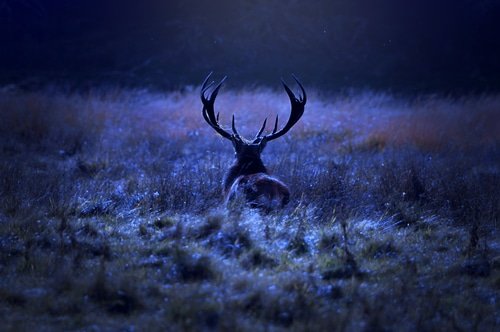
Best Time of Year for Moose Viewing
Spring: Calving Season and Increased Moose Activity
Spring is a magical time to witness the wonders of nature, and when it comes to moose viewing, it’s no exception. As the snow melts and the first signs of life emerge, moose enter calving season.
This means adorable baby moose, known as calves, make their debut! They are a delight to observe as they clumsily follow their mothers through the wilderness.
During this time, moose activity increases as they search for nutrient-rich vegetation to support their growing families. The woods come alive with the sound of twigs snapping under massive hooves and occasional grunts echoing through the trees.
Summer: Optimal Weather Conditions and Prime Feeding Opportunities
Summer brings warmth and longer daylight hours, creating ideal conditions for moose and aspiring wildlife enthusiasts. The lush vegetation provides ample food for these majestic creatures, making it easier to observe them in action.
Picture yourself strolling along tranquil lakeshores or exploring vast meadows where moose graze peacefully on tender plants under the summer sun. You might even spot them cooling off in shallow streams or lakes during hot afternoons—a refreshing sight!
Fall: Rutting Season and the Chance to Witness Impressive Displays of Dominance
As autumn paints the landscape in vibrant hues of reds, oranges, and yellows, another spectacle awaits those who seek encounters with moose: rutting season. Fall is when male moose compete for dominance by engaging in intense battles that showcase their strength and determination to win over prospective mates.
Picture two magnificent bull moose locking antlers in a clash that resonates through the forest—an awe-inspiring display of power! Witnessing this natural phenomenon can be thrilling and humbling as you witness the primal instincts of these majestic creatures.
Remember, each season offers unique opportunities to observe moose in their natural habitat. Whether captivated by adorable calves in spring, intrigued by moose feasting in summer, or awed by the raw power of rutting bulls in fall, plan your visits to align with these seasons for a truly remarkable experience.
Essential Gear for Moose Viewing Adventures
Binoculars or Spotting Scopes: Enhancing the Moose Encounter
One of the most essential gear for any moose enthusiast is a good pair of binoculars or a high-quality spotting scope. These optical tools allow you to observe moose safely without disturbing their natural behavior. They bring these majestic creatures closer, enabling you to appreciate their intricate features and behaviors in detail.
With binoculars or a spotting scope, you can spot moose in dense forests, across meadows, or even from the comfort of your car on a scenic drive. Look for binoculars with higher magnification and wide objective lenses for brighter images and better clarity.
Appropriate Clothing and Footwear: Comfort is Key
Moose-viewing adventures often occur in rugged and unpredictable terrains, so it’s crucial to dress appropriately for varying weather conditions. Layering your clothing is advisable as it allows you to adjust to temperature changes throughout the day. Start with a moisture-wicking base layer that keeps you dry by wicking away sweat.
Add insulating layers like fleece or down jackets to trap warmth, especially during cooler seasons when moose sightings are common. Additionally, wear waterproof and sturdy footwear with good traction to navigate muddy trails or wetlands where moose tend to frequent.
Field Guides or Smartphone Apps: Identifying Different Moose Species
To fully immerse yourself in the world of moose, carrying field guides or using smartphone apps specifically designed for wildlife identification can greatly enhance your experience. These resources provide detailed descriptions, images, and range maps of different moose species found in various regions. By familiarizing yourself with key characteristics such as antler shape, body size variations, and coloration patterns specific to different species/subspecies of moose, you can confidently identify the animals you encounter in the wild.
Moreover, some smartphone apps even enable you to record observations and contribute data to citizen science projects, further enhancing your moose-viewing adventure. Remember, having the right gear enhances your comfort during moose viewing and improves your chances of observing these magnificent creatures up close while respecting their space and safety.
Techniques for Spotting Moose in the Wild
When venturing into moose territory, honing your scanning skills is crucial for a successful sighting. Please keep your eyes peeled on open areas such as meadows, wetlands, and forest edges where moose often graze and browse for their favorite vegetation. Look for signs of recent feeding activity, like fresh tracks or trampled vegetation. Remember, moose are creatures of habit and tend to revisit reliable food sources, so pay attention to areas known for their abundance of willows, aquatic plants, and young trees – these are often the best places to see moose in the wild.
To increase your chances of spotting these majestic creatures, sharpen your listening skills and keen eyesight. As you move through the moose habitat, tune in to nature’s surrounding orchestra. Listen for distinct sounds like twigs snapping underfoot or the low grunting noises male moose make during rutting season when looking for potential mates or asserting dominance. These audible cues can guide you toward nearby moose that might remain hidden. So take a moment to appreciate nature’s symphony while keeping alert!
One of the key ingredients in successful wildlife observation is patience – an invaluable virtue when spotting elusive creatures like moose. Find a comfortable spot with good visibility near known feeding areas or frequented trails and settle in quietly, allowing time for the magic of nature to unfold before you. Moose are generally timid animals and may be easily frightened by sudden movements or loud noises. Maintaining a calm and quiet presence increases the likelihood of observing moose in their undisturbed natural behavior.
So please sit back, blend into the surroundings, and let the wonders of moose viewing reveal themselves at their own pace. This article section explored various techniques for spotting moose in the wild. By scanning open areas where moose feed, listening carefully for telltale sounds like twig snapping or grunting, and practicing patience while maintaining a quiet presence, you can enhance your chances of successfully observing these magnificent creatures. Remember to respect wildlife etiquette and observe moose safely from a distance to ensure their well-being and your memorable encounters.
Respecting Wildlife Etiquette During Moose Encounters
Keeping a safe distance from moose to avoid disturbing them or provoking aggression
When observing moose safely, keeping a respectful distance is crucial. These majestic creatures may appear gentle but are highly territorial and easily agitated. Generally, maintain at least 50 yards of separation between you and the moose.
This distance ensures both your safety and the continued tranquility of the animal. Remember, it’s about protecting yourself and preserving their natural behavior and habitat.
Observing quietly without making sudden movements or loud noises
Imagine you’re in the woods, camera in hand, eagerly awaiting the perfect shot of a magnificent moose grazing peacefully. Suddenly, your cell phone rings with a blaring ringtone that echoes through the forest. Startled by this sudden intrusion, the moose flees into the dense foliage.
To prevent such mishaps, it’s essential to observe quietly. Speak in hushed tones or, better yet, refrain from talking altogether. Avoid any sudden movements that might startle or alarm these sensitive creatures. Remember, silence is golden when it comes to encountering these majestic animals.
Never approach calves, as it may lead to defensive behavior from adult moose.
It can be tempting to approach an adorable baby moose calf for an up-close encounter or an irresistible photo opportunity. However, such actions can have dire consequences for you and the calf.
Approaching calves puts their safety at risk as their protective mothers may perceive your actions as threats and respond aggressively to defend their young ones. Admire these adorable creatures from afar and remember that respecting boundaries is crucial for maintaining harmonious coexistence with wildlife.
Respecting wildlife etiquette during moose encounters is vital to ensure a safe and enjoyable experience for humans and these magnificent creatures. Keeping a safe distance, observing quietly, and refraining from approaching calves are essential guidelines.
By adhering to these principles, you can foster a deep appreciation of moose in their natural habitats while preserving the integrity of their environment. So explore the best places to see moose, always considering the importance of respecting wildlife etiquette.
Capturing Memorable Moments: Photography Tips
Composing your shot:
When photographing these magnificent creatures, it’s important to capture their grandeur. Frame the moose against a stunning backdrop of mountains, lakes, or forests to emphasize their natural habitat.
Experiment with different angles and perspectives; a low-angle shot can enhance the moose’s size and power, while a wide-angle lens can emphasize the vastness of their surroundings. Remember to leave space around the moose to showcase its presence in the landscape.
Wait for that perfect shot:
Patience is key when photographing wildlife, especially moose. Find a strategic position where you won’t disturb them but still have a clear view.
Take your time and observe their behavior; this will allow you to anticipate captivating moments like a bull displaying dominance or a calf frolicking in the meadow. Using burst mode on your camera can help ensure you capture that perfect action shot.
The magic of natural light:
Photographing moose during the golden hours—early morning or late afternoon—can add a touch of enchantment to your images. The soft, warm light creates beautiful contrasts and enhances colors. Be mindful of using flash photography as it may startle or disturb the animals.
Instead, experiment with adjusting your ISO settings and using longer shutter speeds to capture well-exposed shots in low-light conditions.
Conclusion
Observing moose in their natural habitat is an awe-inspiring experience that connects us with nature’s magnificence. By understanding their behavior and choosing appropriate locations and times, we increase our chances of encountering these majestic creatures up close. However, it’s crucial always to prioritize safety for ourselves and the animals we admire.
Whether through binoculars or a camera lens, capturing these memorable moments allows us to cherish and share the beauty of these gentle giants. So head out to the best places to see moose, armed with knowledge and respect, and prepare for an adventure that will leave you with lasting memories.

